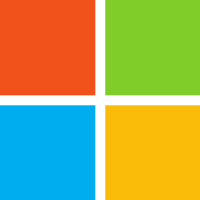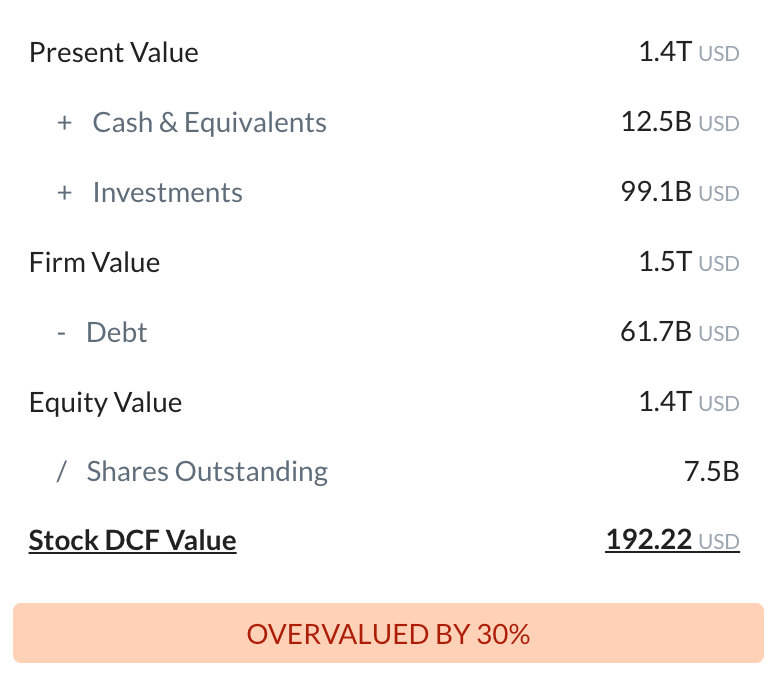
Microsoft Corp
NASDAQ:MSFT

Intrinsic Value
The intrinsic value of one
 MSFT
stock under the Base Case scenario is
313.98
USD.
Compared to the current market price of 382.14 USD,
Microsoft Corp
is
Overvalued by 18%.
MSFT
stock under the Base Case scenario is
313.98
USD.
Compared to the current market price of 382.14 USD,
Microsoft Corp
is
Overvalued by 18%.
The Intrinsic Value is calculated as the average of DCF and Relative values:

Valuation History
Microsoft Corp

Fundamental Analysis

Mounting competition from Amazon Web Services and Google Cloud could erode Azure’s market share, intensifying pricing pressures and dampening profit margins in one of Microsoft’s key growth drivers.
Azure’s continued double-digit growth prospects, fueled by rising demand for AI and cloud services, position Microsoft as a leader in enterprise digital transformation, potentially driving robust long-term revenue streams.

Revenue & Expenses Breakdown
Microsoft Corp

Balance Sheet Decomposition
Microsoft Corp

| Current Assets | 147.1B |
| Cash & Short-Term Investments | 71.6B |
| Receivables | 59.6B |
| Other Current Assets | 15.9B |
| Non-Current Assets | 386.8B |
| Long-Term Investments | 15.6B |
| PP&E | 189.7B |
| Intangibles | 144.6B |
| Other Non-Current Assets | 36.9B |
Free Cash Flow Analysis
Microsoft Corp

| USD | |
| Free Cash Flow | USD |
Earnings Waterfall
Microsoft Corp

|
Revenue
|
261.8B
USD
|
|
Cost of Revenue
|
-80.1B
USD
|
|
Gross Profit
|
181.7B
USD
|
|
Operating Expenses
|
-64B
USD
|
|
Operating Income
|
117.7B
USD
|
|
Other Expenses
|
-25B
USD
|
|
Net Income
|
92.8B
USD
|
MSFT Profitability Score
Profitability Due Diligence

Microsoft Corp's profitability score is 76/100. The higher the profitability score, the more profitable the company is.

Score
Microsoft Corp's profitability score is 76/100. The higher the profitability score, the more profitable the company is.
MSFT Solvency Score
Solvency Due Diligence

Microsoft Corp's solvency score is 70/100. The higher the solvency score, the more solvent the company is.

Score
Microsoft Corp's solvency score is 70/100. The higher the solvency score, the more solvent the company is.
Wall St
Price Targets
MSFT Price Targets Summary
Microsoft Corp

According to Wall Street analysts, the average 1-year price target for
 MSFT
is 510.62 USD
with a low forecast of 434.16 USD and a high forecast of 682.5 USD.
MSFT
is 510.62 USD
with a low forecast of 434.16 USD and a high forecast of 682.5 USD.
Dividends
Current shareholder yield for  MSFT is
.
MSFT is
.
Shareholder yield represents the total return a company provides to its shareholders, calculated as the sum of dividend yield, buyback yield, and debt paydown yield. What is shareholder yield?
The intrinsic value of one
 MSFT
stock under the Base Case scenario is
313.98
USD.
MSFT
stock under the Base Case scenario is
313.98
USD.
Compared to the current market price of 382.14 USD,
 Microsoft Corp
is
Overvalued by 18%.
Microsoft Corp
is
Overvalued by 18%.



























































 You don't have any saved screeners yet
You don't have any saved screeners yet